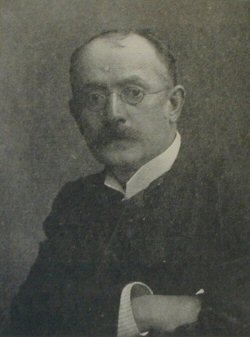 JOHN M. CRAWFORD
JOHN M. CRAWFORD JOHN M. CRAWFORD
JOHN M. CRAWFORD BORN in Parliamentary Road, Glasgow, in 1854, Mr. Crawford
was the son of John Crawford, a Glasgow sculptor, some of whose work may be seen
in the figure of Hope leaning on an anchor in front of the Seaman's Chapel, the
figures on top of the bank at the corner of Bridge Street and Carlton Place, on
McIntyre's corner at the Cross, and elsewhere. The young sculptor gave much
promise, but died at the age of thirty. His son was educated at Hamilton
Academy, and thence went to the office of the late John Burnet, architect in
Glasgow. At the end of his time as a pupil he went to London, and there for ten
years wrought with some of the most prominent architects of the time. He
exercised his profession also for shorter periods in Birmingham and
Stoke-on-Trent, and at last settled in Dunbarton. There he began practice for
himself, and at the same time wrought for Messrs. William Denny & Brothers in
the designing of ship saloons, etc. The hall mark of his work is to be seen in
many of the houses and churches in Dunbarton and its neighbourhood. In 1897 he
migrated to Glasgow, where for some time he had carried on an office, and since
then he has done much characteristic work in the city. Among his chief buildings
may be recorded Glenburn Hydropathic at Rothesay, the Denny Institute,
Infectious Diseases Hospital, College Street Board School, and Station Hotel
Buildings at Dunbarton, and the Experimental Tank of Messrs. John Brown & Co. at
Clydebank, which is the largest and most up-to-date in this country.
Mr. Crawford is a member of the Glasgow Institute of
Architects, and Fellow of the R.I.B.A. In 1903 he was chosen President of
Glasgow art Club, being the first architect so honoured, and he was re-elected
to the post in 1904.
Back to
Index of Glasgow Men (1909)